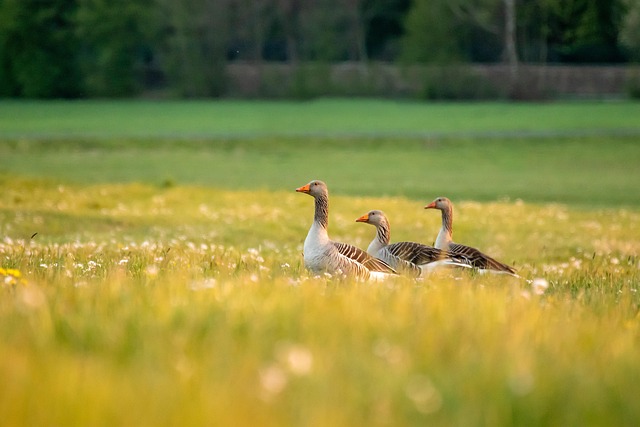Before starting any lawn care or landscaping project, thoroughly assess your property's unique characteristics (size, vegetation, sunlight, soil) and define your goals (aesthetics, functionality, low-maintenance). Prioritize either a lush lawn for gatherings or native plants for reduced upkeep. Evaluate your budget and upkeep capabilities to ensure your chosen design aligns with your care skills. Consider blending outdoor living spaces with your home for functionality and incorporate seasonal blooms for visual appeal and practicality throughout the year.
Landscaping design transforms outdoor spaces into functional, aesthetically pleasing environments. Whether aiming for a serene retreat or a vibrant entertaining area, understanding your needs and goals is crucial. This article guides you through the process from start to finish, focusing on key aspects of successful landscaping. We explore identifying your style preferences and assessing your space, designing with hardscaping, softscaping, and lighting, and implementing your plan effectively, whether DIY or with professionals. Discover tips for budgeting, planting techniques, and more, bringing your dream lawn and landscape to life.
- Understanding Your Landscaping Needs and Goals
- – Identifying your style preferences and functional requirements
- – Assessing the physical characteristics of your outdoor space
Understanding Your Landscaping Needs and Goals

Before diving into landscaping design, it’s crucial to take time and understand your specific needs and goals. This process involves considering factors like the size and layout of your property, existing vegetation, and personal preferences for aesthetics and functionality. For instance, some homeowners prioritize creating a lush green lawn for family gatherings, while others may aim to establish an eco-friendly garden with native plants that require minimal maintenance. Defining these needs is the foundation for crafting a successful landscaping plan that seamlessly integrates with your lifestyle and enhances your outdoor space.
Effective planning also entails evaluating your budget and considering ongoing upkeep requirements. This ensures you choose design elements and plants suited to your care capabilities, whether it’s low-maintenance options or more demanding landscapes that require regular lawn care and landscaping services. By aligning your vision with practical considerations, you can create a vibrant outdoor oasis that brings joy and value to your home.
– Identifying your style preferences and functional requirements

Before diving into the world of landscaping design, it’s crucial to identify your style preferences and functional requirements. This involves careful consideration of factors such as climate, soil type, and available space. For instance, if you’re a fan of lush green spaces, prioritizing lawn care might be top of your list, ensuring your landscape not only looks aesthetically pleasing but also requires regular maintenance. On the other hand, if functionality is key, designing outdoor living areas that seamlessly blend with your home and cater to specific activities like entertaining or relaxing could take precedence.
In terms of style, whether you’re drawn to formal gardens with crisp lines and structured beds or a more naturalistic approach with native plants and organic shapes, understanding these preferences will guide the overall aesthetic. Additionally, considering how the landscape will function throughout the year is essential. For example, incorporating seasonal blooms ensures your garden stays vibrant during different times of the year, enhancing curb appeal and providing a source of enjoyment without constant upkeep. Effective planning balances both visual appeal and practicality, resulting in a landscape that not only satisfies personal tastes but also meets practical needs for years to come.
– Assessing the physical characteristics of your outdoor space

Before tackling any lawn care or landscaping project, it’s crucial to assess your outdoor space’s unique physical characteristics. Take stock of factors like sunlight exposure—whether areas are shaded, partially sunny, or fully exposed—and the existing topography. Note the quality and condition of the soil, which significantly impacts plant growth, as well as any challenging elements like inclines, obstructions, or areas prone to pooling water. These initial observations will guide your design decisions, ensuring that plants, pathways, and other features are strategically placed for optimal visual appeal and functionality.
Consider also the overall size and shape of your yard and its proximity to neighbouring properties. Understanding these dimensions will help in determining the scale of your landscape design while maintaining a harmonious blend with the surrounding environment. By thoroughly evaluating these physical characteristics, you’re setting the stage for creating a beautiful, practical, and sustainable outdoor space through effective lawn care and landscaping practices.
Incorporating effective landscaping design requires understanding your specific needs and goals, as well as the unique characteristics of your outdoor space. By identifying personal style preferences and functional requirements, you can create a lawn care and landscaping plan that enhances both aesthetics and practicality. Assess the physical aspects of your yard to make informed decisions about planting, hardscaping, and other features, ultimately crafting a vibrant and functional outdoor oasis tailored to your desires.



